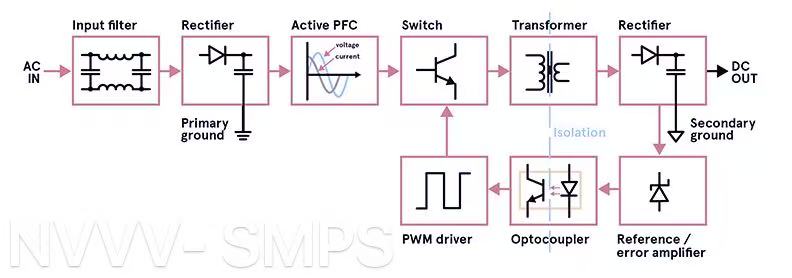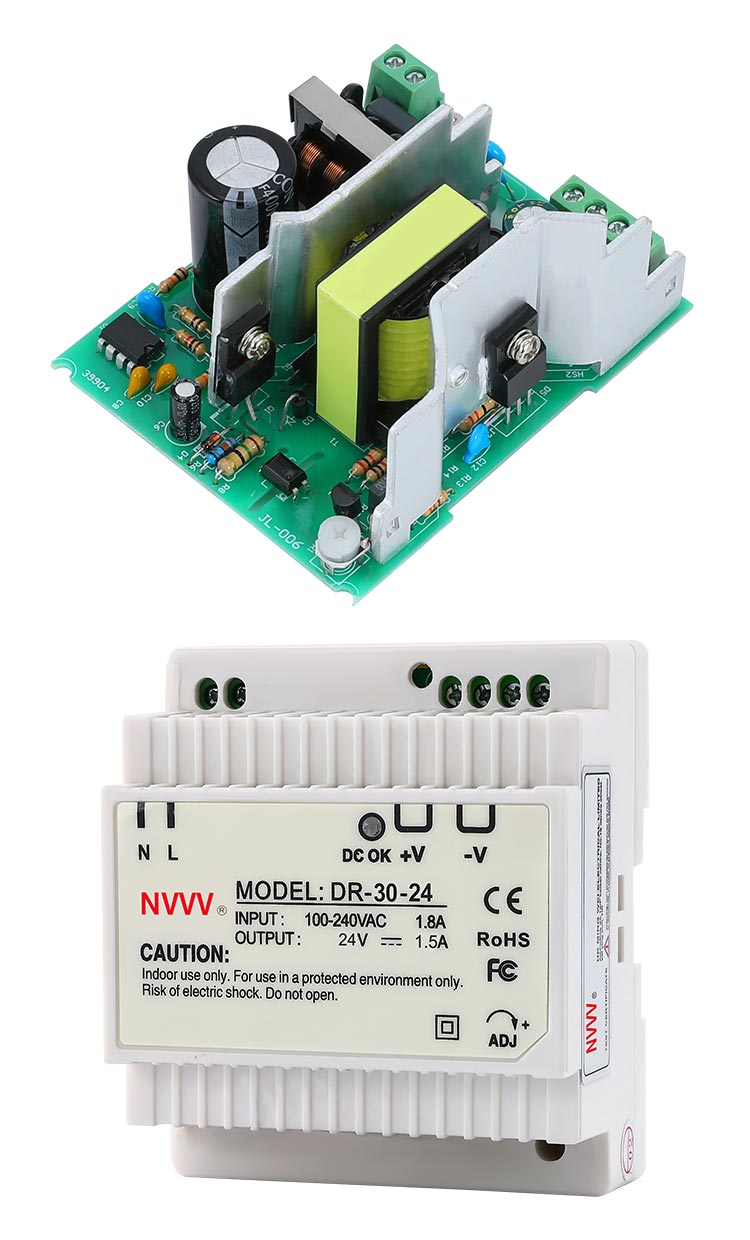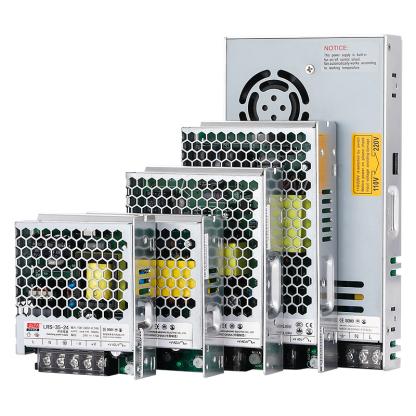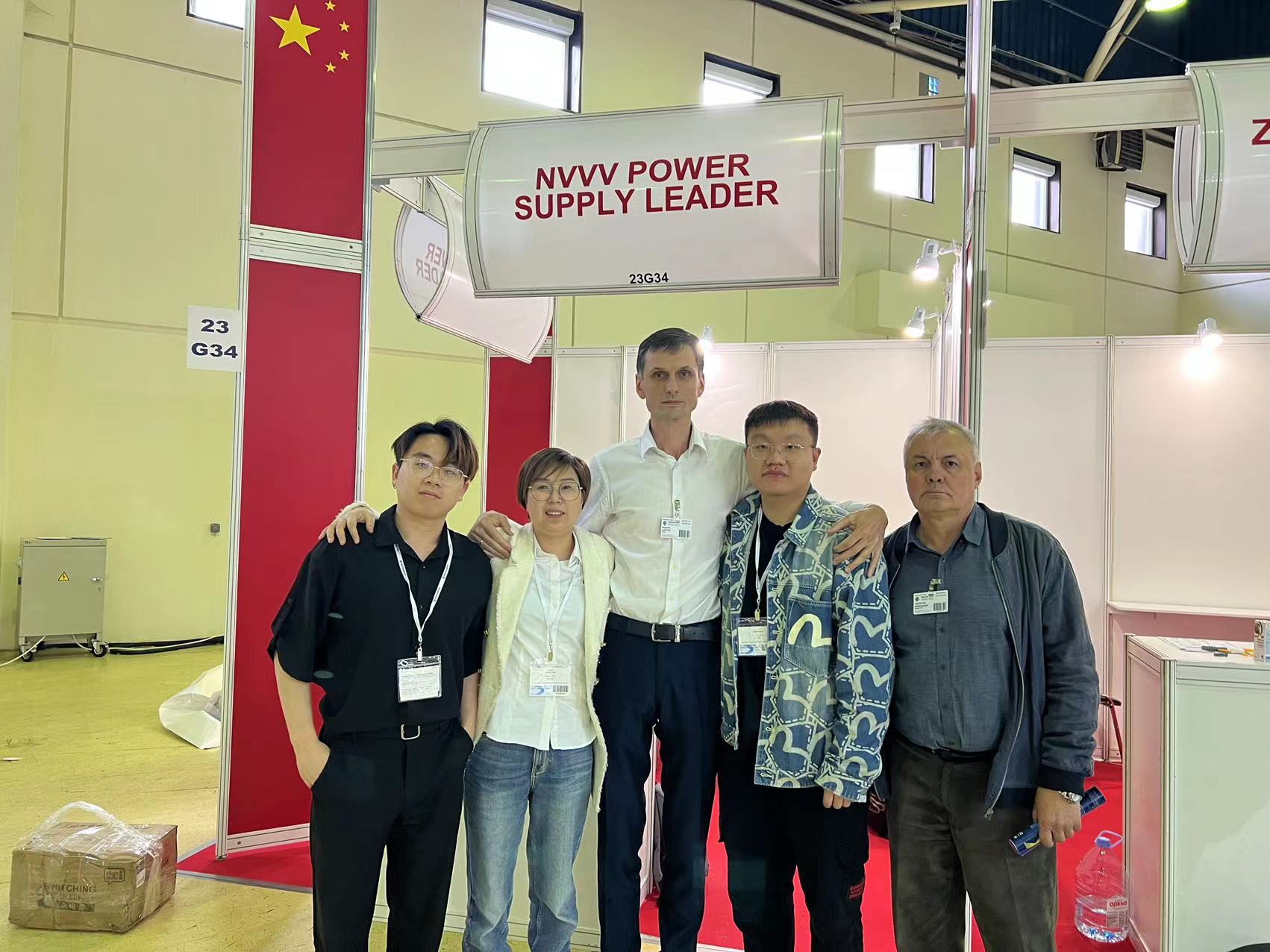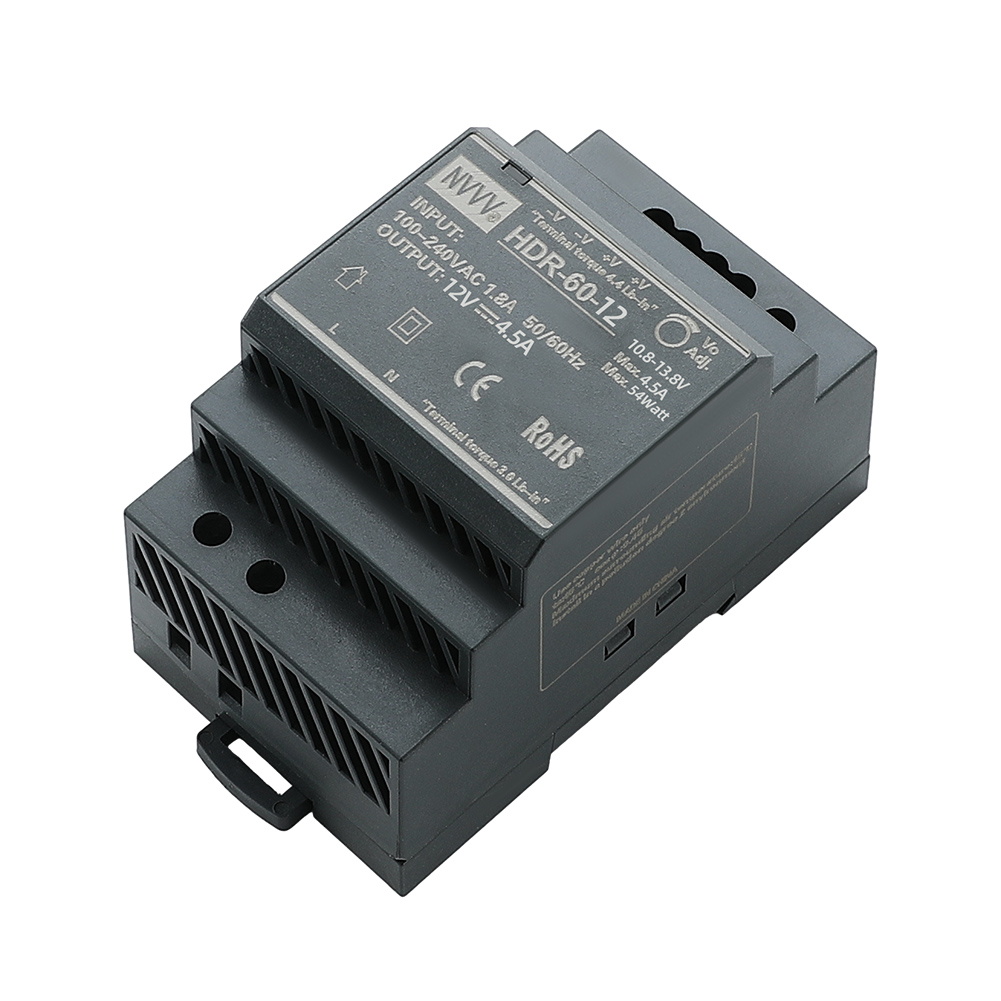6 Key Benefits of Using a Switching Mode Power Supply in Industrial Power
Industrial systems demand more than just power—they demand precision, reliability, and resilience. From fire control panels and ventilation systems to elevators, pumps, and automated manufacturing lines, the quality of power supply directly impacts operational stability and safety.
That’s why more and more system integrators and industrial engineers are turning to the switching mode power supply (SMPS)—a compact, efficient, and highly adaptable solution designed to meet modern industrial standards.
Let’s explore the key questions driving SMPS adoption across today’s industrial power infrastructure.
Table of Contents
1.How Does a Switching Mode Power Supply Improve Industrial Energy Efficiency?
2.Why Is Stable and Protected Power Critical for Industrial Equipment?
3.How Can SMPS Help Save Space in Industrial Control Systems?
4.What Role Does Power Factor Correction Play in SMPS for Industrial Use?
5.How Does SMPS Ensure Reliable Performance in Harsh Industrial Environments?
6.Why Is Low-Maintenance Power Supply Important in Industrial Applications?
7.Why Is NVVV’s SMPS a Trusted Choice for Industrial Power Systems?
1. How Does a Switching Mode Power Supply Improve Industrial Energy Efficiency?
Energy efficiency isn’t just a matter of sustainability—it’s a direct cost factor for industrial sites that operate 24/7. Traditional linear power supplies convert power at about 50%–70% efficiency, losing the rest as heat. By contrast, a well-designed switching mode power supply regularly achieves 85%–95% efficiency, dramatically reducing energy waste.
This level of efficiency matters across thousands of control panels and devices. Less heat also means smaller or no cooling fans, longer component life, and reduced HVAC loads in enclosed environments.
In a manufacturing facility where dozens of control boxes ran on legacy power units, engineers noted consistent overheating and premature equipment aging. After switching to SMPS with soft-switching technology and synchronous rectification, the facility reported not only lower energy bills, but also cooler cabinet temperatures and longer service intervals.
What makes switching power supply so efficient is its ability to convert power through high-frequency switching instead of dissipating excess energy as heat. This means the components inside the power supply are working smarter, not harder. It also means lower standby power draw—important in systems that may operate intermittently or have sleep cycles.
Many industrial systems today, such as motion sensors, access control panels, and smart lighting controllers, only consume power in short bursts. A high-efficiency SMPS with ultra-low standby power consumption helps reduce overall load and supports green building certifications and sustainability initiatives.
Ultimately, the energy savings offered by SMPS accumulate quickly across an industrial facility, reducing not only operational expenses but also the carbon footprint—without compromising performance or reliability.
2. Why Is Stable and Protected Power Critical for Industrial Equipment?
Industrial control systems—from fire suppression to programmable logic controllers (PLCs)—rely on precisely regulated DC power. Even slight voltage deviations can cause signal errors, communication loss, or equipment shutdowns.
SMPS provides tightly regulated voltage output, rapid response to load changes, and multiple protective functions including:
Overvoltage, undervoltage, and short-circuit protection
Thermal protection and auto-restart functions
Stable output under fluctuating input conditions
In one smart building project, unstable line voltage caused elevator controllers to intermittently fail during grid transitions. The team replaced their outdated power modules with SMPS featuring integrated protection and wide input ranges. The result? Flawless elevator performance, even during brief brownouts or generator switching.
What’s particularly beneficial is the intelligent protection logic embedded in many SMPS designs. Instead of simply shutting down, the power supply can auto-restart, current-limit, or signal alarms—minimizing damage and simplifying recovery. This matters in systems like fire alarms, where continuity of service is more important than just “protection.”
Furthermore, SMPS units are often designed with isolation between input and output. This galvanic isolation protects low-voltage control electronics from spikes or noise present on the AC line, reducing the risk of downstream component damage.
In industrial settings where multiple systems are interconnected—like HVAC control networks, emergency lighting systems, or distributed I/O—one weak power link can affect dozens of devices. That’s why stable and protected SMPS power isn’t just preferred—it’s essential for modern industrial system reliability.
3. How Can SMPS Help Save Space in Industrial Control Systems?
Industrial environments are space-constrained, especially when retrofitting older control panels. One of SMPS’s inherent advantages is its compact design—made possible by high-frequency switching that allows smaller transformers and capacitors.
Even more, DIN rail–mounted SMPS models simplify panel layout, reduce clutter, and support modular builds. This is especially valuable in distributed systems like HVAC zoning controllers or smoke exhaust units on multiple floors.
In an airport terminal upgrade, engineers needed to add surge protection and new I/O modules into an existing control cabinet. By replacing bulky linear power units with slimline SMPS DIN modules, they freed up over 40% of panel space, allowing the integration of new systems without costly enclosure replacement.
The flexibility of SMPS in terms of form factor allows designers to think creatively. You’ll find ultra-narrow 15W or 30W SMPS units for compact junction boxes, as well as high-power 240W or 480W models for motor control or fire pump systems—all mountable on the same DIN rail infrastructure.
Moreover, switched mode power supply often includes universal input voltage support (e.g., 85–264V AC) in a single unit, meaning fewer SKUs and simplified inventory for system integrators. When upgrades or maintenance are needed, a technician can carry just one or two part numbers and cover multiple sites and voltages—saving time and reducing human error.
As industrial systems become more interconnected and cabinet space remains limited, the compactness and versatility of SMPS becomes a practical design advantage—contributing not just to performance, but also to ease of installation and scalability.
4. What Role Does Power Factor Correction Play in SMPS for Industrial Use?
Poor power factor leads to inefficiencies in power distribution, voltage drops, and sometimes, utility penalties. Many countries mandate minimum power factor levels for industrial operations, particularly those with large inductive loads (motors, fans, compressors).
High-end switching mode power supplies often include active Power Factor Correction (PFC) circuitry, improving the power factor to 0.95 or higher. This not only helps meet regulatory requirements but also reduces strain on transformers, feeders, and backup systems.
In a logistics warehouse with dozens of conveyor motors and fire safety fans, engineers identified a steadily declining power factor due to outdated uncorrected power supplies. Replacing them with SMPS models equipped with PFC immediately improved the site’s power quality—eliminating penalties and increasing system stability.
PFC also helps avoid harmonic distortion, which can interfere with sensitive equipment and communication lines. In facilities where electrical noise must be minimized—such as those with signal amplifiers, emergency radios, or SCADA systems—this is more than a regulatory checkbox; it's a real-world performance enhancer.
In the long run, PFC-enabled SMPS not only supports electrical compliance, but also improves the overall health and resilience of the industrial power ecosystem.
5. How Does SMPS Ensure Reliable Performance in Harsh Industrial Environments?
Industrial power systems don’t always operate in ideal conditions. They face dust, vibration, high humidity, salt corrosion, and extreme temperatures—especially in basements, rooftops, or outdoor utility enclosures.
That’s why industrial-grade SMPS units are built to survive such challenges. Features include:
Wide operating temperature ranges (–30°C to +70°C)
Conformal coating on PCBs to resist moisture and corrosion
Fully sealed or IP-rated housings
Fanless cooling for silent, failure-resistant performance
A regional metro station with tunnel-mounted control panels faced repeated corrosion failures due to underground humidity and air salinity. By switching to SMPS with conformal coating and sealed enclosures, the system saw zero failures over two rainy seasons and significantly reduced maintenance needs.
Reliable operation in harsh environments isn't just about component durability—it’s also about preventing costly downtime. When systems like fire suppression, access control, or emergency lifts fail due to environmental factors, the consequences can go beyond repair costs. That’s why choosing SMPS with industrial-grade protections is a long-term investment in uptime, safety, and system continuity.
6. Why Is Low-Maintenance Power Supply Important in Industrial Applications?
Every hour spent on maintenance costs time, money, and manpower. SMPS helps minimize that burden through:
Fanless, passive cooling, eliminating the most failure-prone component
Self-recovery after faults, reducing the need for manual resets
Longer component lifespan, thanks to reduced thermal stress
Remote monitoring compatibility, enabling predictive maintenance
In a data center building with hundreds of emergency lighting and smoke extraction panels, the facility team replaced aging PSUs with SMPS. After a full year, they noted zero unplanned service calls related to power, and inspection intervals were safely extended from quarterly to semi-annually.
This reduction in manual intervention also supports lean maintenance strategies—where teams focus on value-added work instead of routine visual checks. Some SMPS models even support basic telemetry features, such as LED status indicators or integration with industrial automation systems, helping facility managers quickly assess power health without opening panels.
Less time on maintenance means more time for strategic tasks—and in high-demand environments, switch mode power supply gives power teams the freedom to focus on performance, not firefighting.
7.Why Is NVVV’s SMPS a Trusted Choice for Industrial Power Systems?
With decades of experience supporting industrial projects, NVVV offers a broad portfolio of switching mode power supplies tailored for real-world industrial needs. Whether you’re designing systems for fire control, elevators, ventilation, or smart factories, NVVV’s products combine performance with dependability.
Flagship models such as the DIN-rail SMPS offer:
Active PFC for energy compliance
Full input voltage range (85–264V) for global projects
Compact, fanless construction for silent, durable operation
Safety certifications for demanding industries
NVVV SMPS units have been successfully integrated into thousands of building fire systems, automation cabinets, and emergency backup networks—delivering efficient power, day after day, in conditions ranging from high-altitude chillers to coastal pump rooms.

